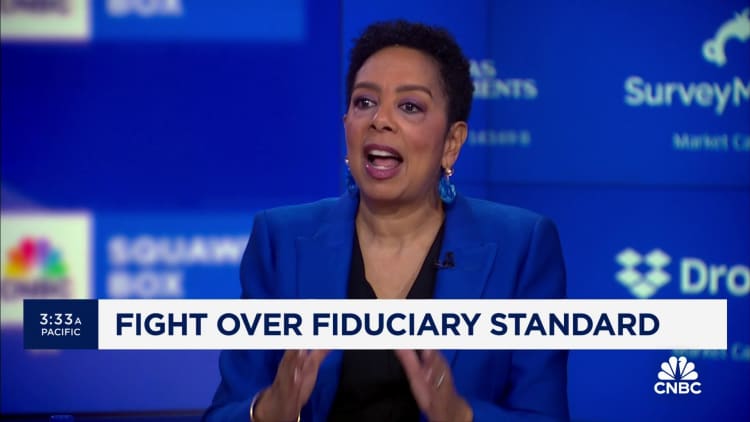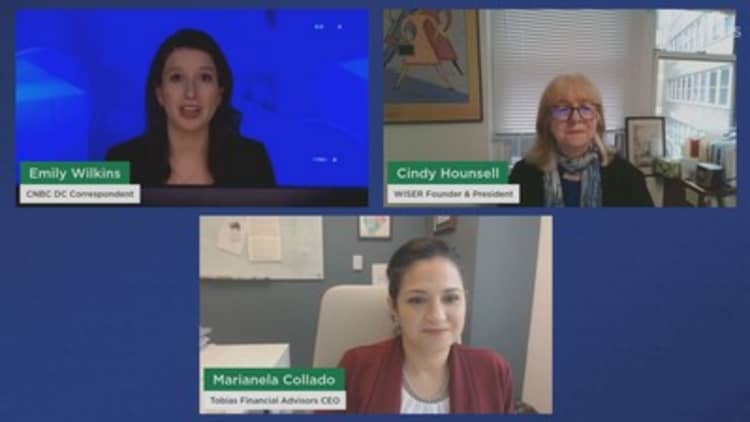Johner Images | Johner Images Royalty-free | Getty Images
A new U.S. Labor Department rule will significantly change the advice many investors receive about rolling money over from 401(k) plans to individual retirement accounts, legal experts say.
The so-called “fiduciary” rule, issued April 23, aims to raise the legal bar for brokers, financial advisors, insurance agents and others who give retirement investment advice.
Such recommendations may be tainted by conflicts of interest under the current rules, the agency says.
Rollovers are undoubtedly a “chief focus” of the regulation, said Katrina Berishaj, an attorney at Stradley Ronon Stevens & Young.
“The Department of Labor was not shy about that,” said Berishaj, co-chair of the firm’s fiduciary governance group.
Millions of investors roll over funds each year
Rollovers are common, especially for retiring investors.
They often involve moving one’s nest egg from a 401(k)-type plan to an IRA.
In 2022, Americans rolled over about $779 billion from workplace retirement plans to IRAs, according to a Council of Economic Advisers analysis. Almost 5.7 million people rolled over money to an IRA in 2020, according to most recent IRS data.
The number and value of those transactions have increased significantly as more baby boomers enter their retirement years. In 2010, for example, about 4.3 million people rolled over a total of $300 billion to IRAs, according to the IRS.
A ‘major shift’ in rollover advice
The new Labor Department rule aims to make more investment recommendations “fiduciary” in nature.
A fiduciary is a legal designation. At a high level, it requires financial professionals to give advice that puts the client first. They have an obligation to be prudent, loyal and truthful when giving advice to clients, and to charge reasonable fees, experts said.
Today, many rollover recommendations aren’t beholden to a fiduciary standard under the Employee Retirement Income Security Act, attorneys said.
Labor officials fear that exposes investors to conflicts of interest, whereby advice may not be best for the investor but earns brokers a higher commission, for example.
If the past is any indication of the future, we can anticipate millions of rollovers each year.
Katrina Berishaj
attorney at Stradley Ronon Stevens & Young
Under the current legal rules, which date to the mid-1970s, a financial agent must satisfy five prongs to be considered a fiduciary.
One of those prongs says they’re a fiduciary if they provide advice on a regular basis, attorneys said.
However, many rollover recommendations don’t happen as part of an ongoing advice relationship. Instead, it’s often a one-time occurrence, attorneys said.
That means it’s “very unusual” for a rollover recommendation today to be beholden to a fiduciary standard, Reish said.
The new Labor Department rule changes that, however.
“Under this rule, one-time investment advice to roll assets out of a plan would trigger fiduciary status under ERISA,” said Berishaj, who called the change a “major shift.”
Why rollover advice may be ‘higher-quality’
Under the new rule, advisors would generally be expected to consider factors such as alternatives to a rollover, including the pros and cons of keeping money in a 401(k) plan, Berishaj said.
For example, they’d likely compare various fees and expenses of a workplace plan vs. an IRA, as well as the services and investments available in both. They’d also provide certain disclosures to investors prior to the rollover, such as a description of the basis for that rollover recommendation, she added.
Good advisors are likely making an honest effort to do what’s best for their clients, but hopefully the Labor Department rule would “bring up the bottom to a better quality,” Reish said.
“I think the DOL’s intent is to encourage higher-quality advice, which would get people both better invested and with lower cost,” Reish said.
However, many financial companies dispute the necessity of the Labor Department rule.
For example, the regulation will “harm retirement savers and their access to the professional financial guidance they want and need,” said Susan Neely, president and CEO of the American Council of Life Insurers, an insurance industry trade group.
Additionally, the Labor Department “has chosen to ignore the significant progress made to strengthen consumer protections” over the last several years, Neely said. They include rules issued by the Securities and Exchange Commission and National Association of Insurance Commissioners.
Reish said those rules are “all less demanding than the DOL rule,” Reish said. “So, it’s a higher standard across the board.”
That’s especially true of recommendations from insurance agents to roll money from a 401(k) plan to an annuity held in an IRA, due to differences in current legal rules versus the Labor Department requirements, according to attorneys and other financial experts.
“We believe insurance agents will be most exposed to this rule, especially those who sell annuities,” Jaret Seiberg, financial services analyst for TD Cowen Washington Research Group, wrote in a recent research note.
Industry groups will likely sue to block the rule from taking effect, he said.


 Economics1 week ago
Economics1 week ago
 Economics1 week ago
Economics1 week ago
 Personal Finance1 week ago
Personal Finance1 week ago
 Accounting1 week ago
Accounting1 week ago
 Blog Post4 days ago
Blog Post4 days ago
 Economics5 days ago
Economics5 days ago
 Personal Finance1 week ago
Personal Finance1 week ago
 Finance1 week ago
Finance1 week ago













